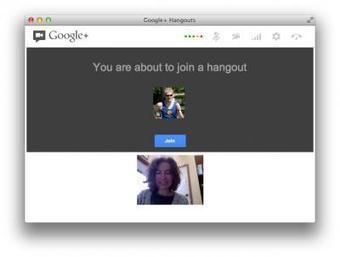… I've seen how groups of people act differently at different sizes. As I discussed in my previous blog post on Group Thresholds …, there are pros and cons associated with different group sizes. However, the smallest group that I spoke of in that article was the 'working team size', which is a group of four to nine members (but ideally about seven). I didn't talk about groups consisting of less than four members-specifically dyads (a group of two people) and triads (a group of three people) ... .
Via Peter B. Sloep



 Your new post is loading...
Your new post is loading...










Networked learning is about learning as an individual in punctuated interaction with various fellow network members (peers). In the course of doing so, groups of people may be formed, either at the behest of the learner him or herself, or through the intervention of teachers themselves or of tools that act on the teacher's behalf. An example of the latter is research my colleagues and I did on ad-hoc transient groups, groups that are formed on the fly to answer a question some fellow network learner is unable to answer (cf. Sloep, 2009). An important question for designers of such networked learning environments is the most appropriate size of such peer groups. In the ad-hoc transient community experiments, we settled for a size of three. Our choice was based on a mix of considerations. One of them was that large groups would rapidly diminish peer willingness to answer questions as they got too many turns. Another one was that large groups would foster social loafing. A third one was that the limited knowledge available in small groups would increase the chance of giving mistaken answers.
Our considerations at the time were based on little more than common sense arguments. We could not find any hard evidence on optimal group sizes. Although Christopher Allen's piece does not site much scientific evidence either, he has amassed a lot of personal experience that can be used to inform optimal group size choices in different circumstances. I am glad to see that, after the fact, his experience supports the choice we made at the time. (@pbsloep)
Sloep, P. B. (2009). Fostering Sociability in Learning Networks through Ad-Hoc Transient Communities. In M. Purvis & B. T. R. Savarimuthu (Eds.), Computer-Mediated Social Networking, ICCMSN 2008, LNAI 5322 (pp. 62–75). Berlin, Heidelberg: Springer. Retrieved from http://hdl.handle.net/1820/1198
Patricia Daniels's insight:
H817 students this is a good contrast to Siemens and Downes insights on connectivism. There have been a few forum and blog postings about some of our learners feeling slightly isolated within this MOOC and commenting about what they perceive to be inactivity. Others are still having navigational problems so perhaps a case of the technology getting in the way of communication. What can we do? Should we be paying more attention to getting ourselves involved in smaller but distributed groups? I have had a few interesting discussions via the forum and via blogs which have taken my thoughts a step further. So out of the masses the most intense dialogue I have had, has been through connecting with groups of twos and threes i.e. dyads and triads respectively. In contrast, the content being produced by the cohort has been a rich source of information and has made me think more critically. What have your experiences been to date?
H817 MA students, the points in this paper may be worth reflecting on in view of our Block 3 group work.